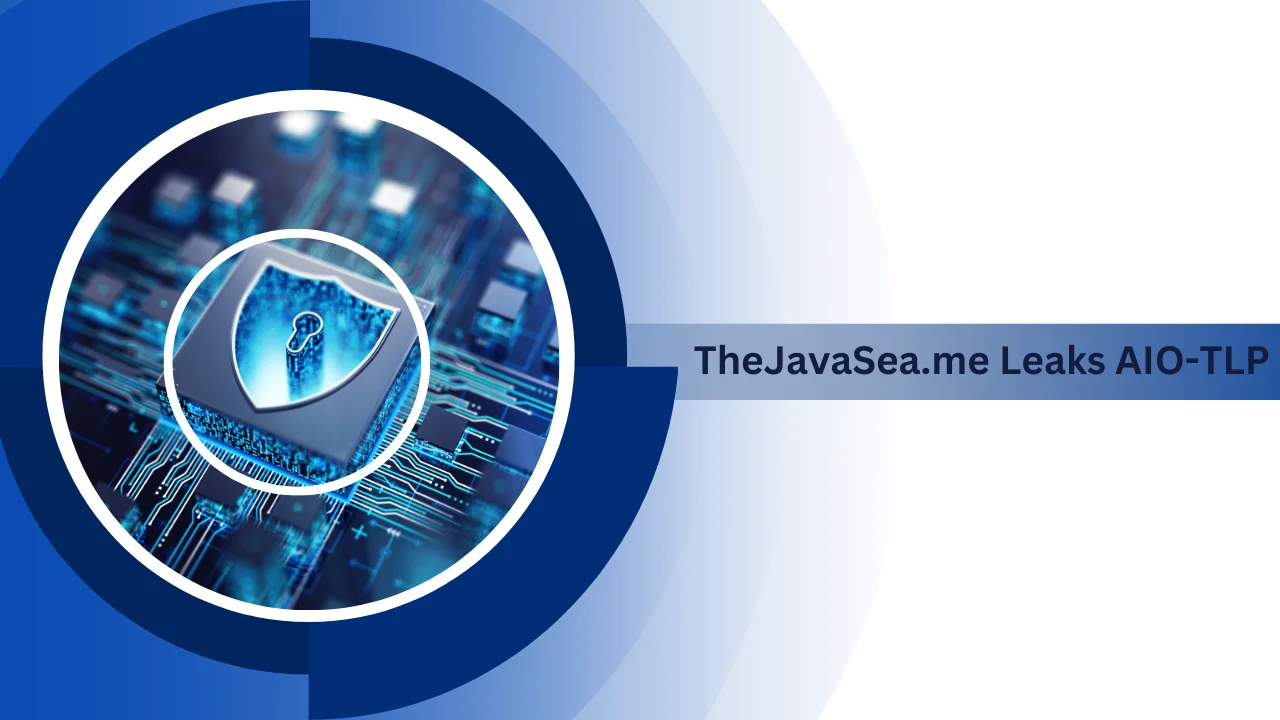In recent months, the cyber community has been abuzz with discussions about thejavasea.me leaks AIO-TLP, a data breach that has raised serious concerns about digital security. This incident is not just another data breach but a profound example of how inadequate cybersecurity can lead to widespread risks. For individuals and organizations relying on the integrity of online systems, understanding the significance of this leak is crucial.
You May Also Like: The Unspoken Rules of Coding
What Happened in the TheJavaSea.me Data Breach?
The breach at TheJavaSea.me occurred when sensitive information classified under the All-In-One Threat Level Protocol (AIO-TLP) was exposed. AIO-TLP is a comprehensive framework that security experts use to assess vulnerabilities and prioritize responses. Its unauthorized exposure means that sensitive insights and tools intended for cybersecurity professionals are now potentially accessible to malicious actors. This has sparked serious concerns, as the leaked information can be weaponized to exploit vulnerabilities across various systems.
The cause of thejavasea.me leaks AIO-TLP appears to be a mix of human error and insufficient cybersecurity measures. Factors such as unpatched software vulnerabilities, weak user passwords, and an overall lack of robust security protocols contributed to the breach. The incident serves as a reminder that even platforms with technical expertise can falter if they do not remain vigilant against evolving threats.
The Consequences of the TheJavaSea.me Leak
The implications of this breach are far-reaching, impacting multiple sectors and users. One of the most immediate effects is the increased risk of cyberattacks. With AIO-TLP’s classified threat-level data now public, malicious actors can exploit it to craft precise attacks on vulnerable systems. Organizations that rely on outdated security measures are particularly at risk, as hackers may use the leaked information to bypass their defenses.
Additionally, thejavasea.me leaks AIO-TLP has significantly damaged the platform’s reputation. Users of the site, as well as stakeholders in the cybersecurity community, have expressed concern over the breach. Trust is essential in the digital landscape, and losing it can have long-term consequences for any platform or organization. The breach has not only exposed vulnerabilities but also raised questions about TheJavaSea.me’s ability to safeguard sensitive information.
TheJavaSea.me Leak Highlights
| Aspect | Details |
|---|---|
| Nature of the Breach | Exposure of AIO-TLP classified threat-level data |
| Causes | Weak passwords, unpatched vulnerabilities, human error |
| Immediate Impact | Increased risk of targeted cyberattacks |
| Reputational Damage | Eroded trust among users and cybersecurity stakeholders |
| Long-Term Implications | Need for enhanced cybersecurity measures |
Benefits of TheJavaSea.me Leaks AIO-TLP
While data breaches like thejavasea.me leaks AIO-TLP are often viewed negatively, some unintended benefits can emerge for cybersecurity professionals and the industry as a whole. Here’s how this incident could offer potential advantages:
1.Increased Awareness:
The leak has highlighted the importance of robust cybersecurity measures. It serves as a wake-up call for organizations to evaluate and upgrade their security protocols to protect sensitive information.
2.Improved Practices:
Cybersecurity teams can analyze the leaked AIO-TLP data to understand how vulnerabilities are identified and categorized. This insight can help refine their threat assessment and response strategies.
3.Stronger Collaboration:
The breach encourages collaboration among cybersecurity professionals. Sharing knowledge about the leak’s implications can lead to the development of new tools and frameworks for threat detection and prevention.
4.Advancing Research:
The exposure of the AIO-TLP framework can spur innovation. Researchers can explore how to create more resilient systems that can withstand similar breaches in the future.
5.User Education:
The incident pushes users to adopt better digital habits, such as using strong passwords and enabling multi-factor authentication. This reduces risks for individuals and organizations alike.
While these benefits do not negate the risks and damage caused by thejavasea.me leaks AIO-TLP, they demonstrate how the cybersecurity community can turn a crisis into an opportunity for growth and improvement.
Why the AIO-TLP Framework Matters
To fully grasp the gravity of thejavasea.me leaks AIO-TLP, it is essential to understand the role of the AIO-TLP framework. This protocol categorizes threats into levels, allowing cybersecurity teams to prioritize responses effectively. For instance, high-level threats require immediate attention, while lower-level issues may allow for delayed action. By providing this structured approach, AIO-TLP helps organizations manage their cybersecurity efforts efficiently.
The leaked data now undermines the integrity of this system. With such sensitive information out in the open, threat actors can reverse-engineer the classifications to target organizations that have yet to address specific vulnerabilities. This creates a scenario where even companies with decent cybersecurity practices may find themselves vulnerable to attacks.
Ethical and Legal Impact of the Leak

The legal and ethical dimensions of thejavasea.me leaks AIO-TLP cannot be overlooked. On a legal front, the unauthorized distribution of AIO-TLP data could lead to lawsuits and regulatory scrutiny. Governments and industry bodies may impose penalties on entities found responsible for failing to protect sensitive information adequately.
Ethically, the incident highlights a broader issue within the cybersecurity domain. Tools and frameworks like AIO-TLP are developed to strengthen digital defenses. However, when such resources fall into the wrong hands, they can be misused, undermining their original intent. This underscores the importance of ethical responsibility in managing and sharing cybersecurity resources.
Lessons Learned from the Incident
The breach at TheJavaSea.me offers valuable lessons for both organizations and individuals. First, it demonstrates the importance of robust security protocols. Keeping software updated, enforcing strong password policies, and regularly auditing systems can go a long way in preventing breaches. The incident also highlights the need for transparency. Organizations must inform users and stakeholders promptly when a breach occurs to mitigate potential fallout.
For users, the incident serves as a reminder to exercise caution when interacting with online platforms. Regularly updating passwords and avoiding the reuse of credentials across sites can help reduce the risk of personal data exposure.
Cybersecurity After the Leak
The cybersecurity landscape has been permanently altered by thejavasea.me leaks AIO-TLP. Moving forward, organizations must adopt a proactive approach to security. This includes investing in advanced technologies like AI-driven threat detection and fostering a culture of cybersecurity awareness among employees. Platforms like TheJavaSea.me must rebuild trust by demonstrating a commitment to improved security practices.
As for the broader cybersecurity community, the incident underscores the importance of collaboration. Sharing best practices, reporting vulnerabilities, and engaging in ethical hacking initiatives can collectively strengthen defenses against cyber threats. At the same time, stricter regulations may be necessary to hold platforms accountable for safeguarding sensitive data.
Conclusion
The breach involving thejavasea.me leaks AIO-TLP is a wake-up call for the entire digital ecosystem. It highlights the vulnerabilities present even in seemingly secure platforms and underscores the consequences of inadequate cybersecurity measures. The exposed AIO-TLP data not only compromises digital defenses but also raises critical ethical and legal questions.
By learning from this incident, both organizations and individuals can take steps to enhance their cybersecurity posture. Whether it’s adopting stronger passwords, updating software, or investing in advanced threat detection technologies, proactive measures are essential. Ultimately, incidents like these remind us of the ever-evolving nature of cyber threats and the need for constant vigilance.



